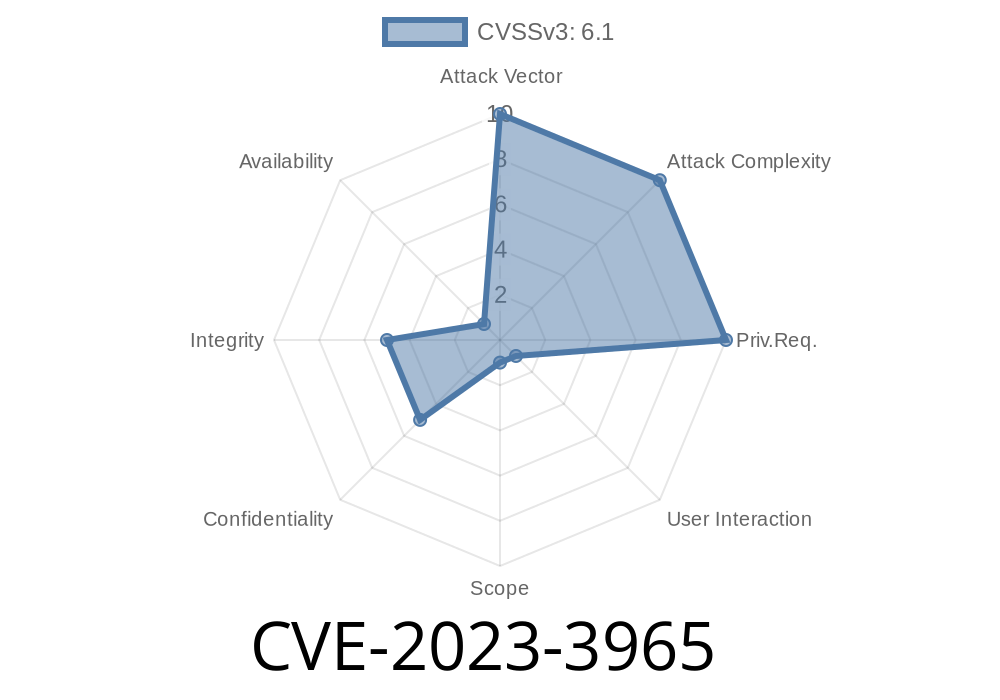CVE-2023-3965 is a vulnerability recently discovered in the nsc WordPress theme that allows for Reflected Cross-Site Scripting (XSS) attacks via prototype pollution. The affected versions are up to, and including, version 1. of the nsc theme. This vulnerability is particularly concerning because it makes it possible for unauthenticated attackers to inject arbitrary web scripts into pages, which then execute if the attacker can successfully trick a user into performing an action like clicking on a link. In this post, we will go over the details of the vulnerability, discuss the code snippet responsible for the issue, and explore potential exploit techniques.
Vulnerability Details
This vulnerability stems from insufficient input sanitization and output escaping in the nsc theme. As a result, an attacker can indirectly modify the object prototype of an existing JavaScript Object, leading to what is known as "prototype pollution." When this occurs, any changes made to the object prototype are then reflected in all instances of that object, creating opportunities for malicious exploitation.
The following code snippet, taken from the nsc theme source code, demonstrates the vulnerable piece of code:
// Insufficient input sanitization and output escaping
// in the nsc theme allows for XSS via prototype pollution
function handleRequest(request) {
let input = request.getParameter("input");
let message = "Hello, " + input + "!";
document.write(message); // Vulnerable point of output
}
In this code, the handleRequest(request) function accepts a user-supplied input, which is then concatenated with a string without proper sanitization. The result is then directly written to the page using the document.write(message) line, which does not perform any output escaping. This is the point at which the vulnerability occurs.
Links to Original References
Below, we have provided a list of links to original references that discuss CVE-2023-3965 in more detail:
1. CVE-2023-3965 - MITRE
2. National Vulnerability Database (NVD) - CVE-2023-3965
3. WordPress Theme Vulnerability: nsc XSS via Prototype Pollution
Exploit Techniques
Now that we understand the vulnerability, let's discuss potential exploitation techniques. The primary method for exploiting this vulnerability is to trick a user into clicking a specially crafted link. The attacker can create a link that contains a malicious script in the "input" parameter, and when a user clicks the link, the script will execute in the context of the targeted user's browser.
Here is an example of an exploit that could be used to leverage CVE-2023-3965
http://your-vulnerable-wordpress-site.com/some-page?input=%3Cscript%3Ealert(%27XSS%20Exploit%20Successful%27)%3C/script%3E
This link contains a script that simply displays an alert with the text "XSS Exploit Successful." If the user clicks this link, the script will execute, demonstrating a successful XSS exploit against the nsc theme.
In conclusion, it is crucial that developers using the nsc WordPress theme take the time to update their theme to a version that is not affected by CVE-2023-3965. By doing so, they can ensure the security of their website and mitigate the risks associated with this Reflected XSS vulnerability.
Timeline
Published on: 10/20/2023 16:15:19 UTC
Last modified on: 11/07/2023 04:20:02 UTC
